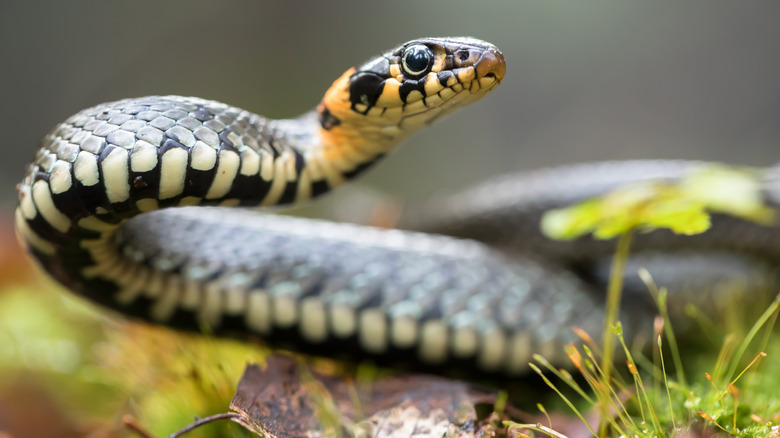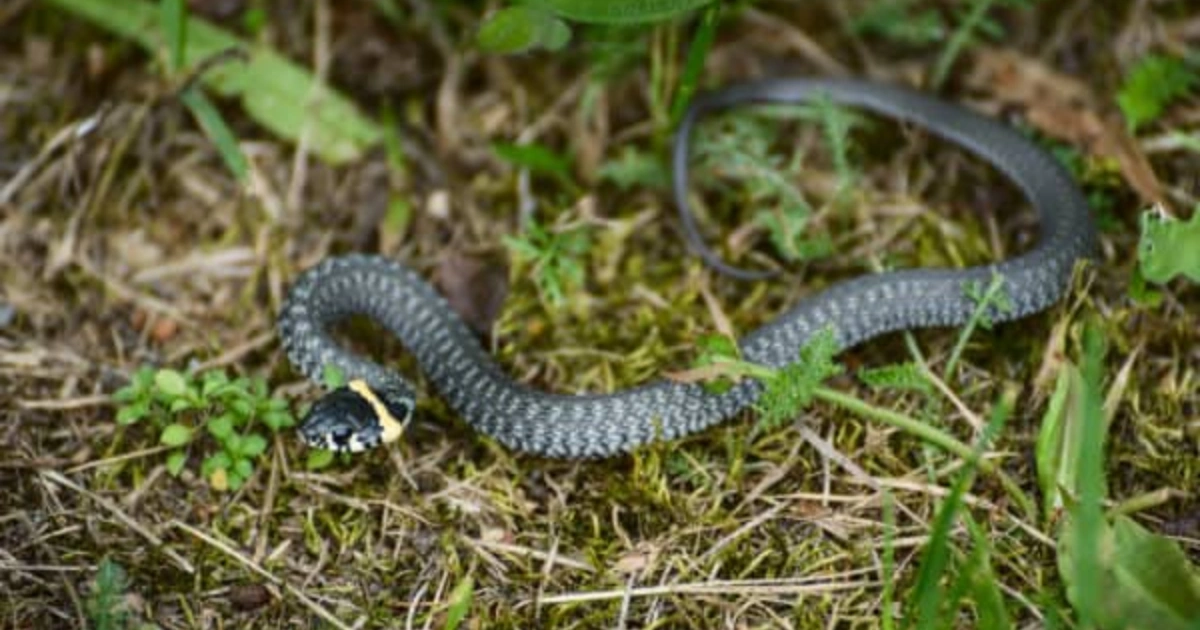A Gentle Yet Powerful Way to Snake-Proof Your Space 🐍🌿
Snakes can be helpful in controlling pests—but not when they slither too close to home. If you’re looking for a safe, non-toxic way to deter them, this natural neem and garlic powder might be the perfect solution. It’s easy to make, chemical-free, and kind to your garden’s ecosystem.
If you’re already exploring eco-friendly ways to maintain your green space, don’t miss our guide on secret garden pest control over at Secrets of the Green Garden—it’s full of practical ideas that complement this remedy beautifully.
Let’s dive into everything you need to know to make and use this powerful natural repellent effectively.
Why Use a Natural Snake Repellent?
Using a natural formula gives you peace of mind:
- No risk to children or pets
- No chemicals leaching into your soil or water
- Budget-friendly ingredients, often already in your kitchen
- Doesn’t harm the snake—just keeps them away
This kind of barrier is especially useful if you’re passionate about eco-gardening and prefer non-lethal solutions. It fits perfectly into any organic gardening routine and supports safe biodiversity.
What You’ll Need 🧂🌿🧄
To prepare this homemade repellent, gather the following:
- 🌿 1 cup sun-dried neem leaves (ground into powder)
- 🧄 10 garlic cloves, crushed
- 🧂 20 g of rock salt
- 🧤 A pair of gloves
- 🥄 A spoon for mixing
- 🏺 An airtight jar for storing the powder
Tip: Make larger batches and store them in a dry, sealed container. It will stay effective for months.

How to Prepare the Powder
Step 1: Sun-dry the neem leaves
Lay fresh neem leaves under direct sunlight for 1–2 days until they become crisp. This drying process concentrates the repellent compounds.
Step 2: Grind the neem leaves
Once dry, grind the leaves into a fine powder using a mortar and pestle or spice grinder.
Step 3: Crush the garlic
Peel and crush the garlic cloves until you get a moist, chunky paste.
Step 4: Mix everything together
Combine the neem powder, garlic paste, and rock salt. Mix thoroughly until you get an evenly textured, crumbly powder.
Step 5: Let it air-dry (optional)
If the mixture is moist, leave it in a shady, airy spot for a few hours to allow it to dry into a more powdery form. Then store in an airtight jar.
Bonus tip: Store it with a bay leaf to preserve freshness and prevent mold buildup.
How to Use It Effectively
This repellent is best used around entry points and garden boundaries.
Sprinkle it generously:
- Around doorways and windows
- Along garden beds and flower patches
- Around compost bins, woodpiles, or outdoor storage
- Near drainage pipes and shaded garden paths
Important: Keep it away from pet bowls and food areas. Although natural, garlic and salt may be irritating to pets if ingested.
How often should you apply it?
Every 10 to 12 days is ideal. If it rains heavily, reapply immediately after the ground dries. In dry climates, once every two weeks is usually enough.
Best time to apply: Early morning or late afternoon when the wind is calm.
Common Mistakes to Avoid
Avoid these pitfalls to ensure the powder remains effective:
❌ Applying while still damp
Solution: Let it fully air-dry before storing or applying.
❌ Sprinkling near pets’ water or food dishes
Solution: Always keep a 1–2 meter buffer zone between the repellent and any pet areas.
❌ Skipping reapplications after rain
Solution: Mark your calendar or set reminders, especially in rainy months.
❌ Over-grinding the garlic into a wet paste
Solution: Crush just enough to release the scent without turning it into liquid.
Benefits of This DIY Snake Repellent
✅ Non-toxic & safe for children and animals
✅ Repels snakes without killing or trapping them
✅ Made from garden-friendly ingredients
✅ Cheap to produce—no need to buy harsh chemicals
✅ Discreet and easy to apply
✅ Long shelf life when stored correctly
This solution is also sustainable. You’re not disrupting the local ecosystem; you’re just gently asking snakes to stay away.
Seasonal and Regional Tips 🗓️🌎
In dry or hot regions:
Sprinkle in the late afternoon when temperatures drop. The scent lasts longer if applied in shaded areas.
During rainy seasons:
Rain can wash away the powder, so reapply more frequently—every 5–7 days if needed. Apply right after rain for best results.
In cooler climates:
Snake activity slows down in winter. Apply the powder in spring and summer when they’re more active.
For North African climates (like Algeria):
Neem thrives locally and dries quickly in the sun. Make use of abundant sunlight for quick preparation, but store the finished powder in a cool place to avoid scent degradation.
Looking for even more natural pest management tricks? Our natural garden defenses article has you covered with easy remedies for everything from slugs to aphids.
FAQs (Frequently Asked Questions)
Does garlic really repel snakes?
Yes. Garlic contains sulfur compounds with strong odors that many snakes dislike. Combined with neem and salt, it creates a powerful deterrent.
Is neem safe around children and pets?
Neem is generally considered safe in moderate outdoor use. Avoid letting pets eat large quantities and don’t apply directly where kids might play barefoot.
How long does the powder last?
Once applied, it typically stays effective for 10–12 days in dry weather. Store leftover powder for up to 6 months in a sealed jar.
Can I use this inside the house?
It’s best for outdoor use. Indoors, the strong garlic odor can be overwhelming and may cling to fabrics or surfaces.
What if I don’t have neem leaves?
Neem oil can be used as a substitute—mix it with baking soda and rock salt for a similar effect.
Final Thoughts: A Safer, Simpler Way to Snake-Proof Your Home 🏡🌱
This DIY snake repellent powder is easy, effective, and supports a peaceful balance between you and local wildlife. It works best as part of a broader natural pest prevention routine—like sealing cracks, trimming dense plants, and eliminating clutter.
For even more green tricks and sustainable living ideas, be sure to visit Secrets of the Green Garden where you’ll find a treasure trove of practical guides.
Tried this recipe? Let us know in the comments below! Share your experience, your own garden tips, or ask a question—we’d love to hear from you.


Thanks for the article. My spouse and i have often noticed that most people are desirous to lose weight when they wish to appear slim along with attractive. On the other hand, they do not constantly realize that there are additional benefits so that you can losing weight also. Doctors assert that over weight people have problems with a variety of disorders that can be instantly attributed to the excess weight. The good thing is that people who sadly are overweight and also suffering from different diseases are able to reduce the severity of their particular illnesses simply by losing weight. You’ll be able to see a gradual but identifiable improvement in health while even a slight amount of fat reduction is realized.
https://t.me/officials_pokerdom/3389
https://t.me/s/iGaming_live/4868
Sie sehen etwas altmodisch aus, obwohl die Suiten Whirlpool-Badewannen bieten .
Die Badezimmer sind mit Marmorwaschtischen, separaten Duschen und Badewannen, Schönheitsspiegeln und Haartrocknern ausgestattet.
Kostenlose Ortsgespräche und WLAN sind in der obligatorischen Resortgebühr der
Unterkunft enthalten. Zu den Standardeinrichtungen in allen Zimmern gehören ein Flachbild-TV mit Kabelkanälen, ein Mini-Kühlschrank ,
ein Bügeleisen / -brett , ein Kofferständer und ein Safe .
Die Böden sind mit grauen Vierpassmustern ausgelegt und die Badezimmer sind mit Marmor ausgekleidet.
Zu den weiteren Annehmlichkeiten gehören ein Spa , ein Fitnessraum ,
kostenfreies WLAN und Parkplätze (gegen Gebühr).
Als Besonderheit genießen die Gäste in den Badezimmern Kosmetikartikel.
Eine Dusche und eine Badewanne gehören zum Interieur der Badezimmer.
Erfrischende Getränke an der Poolbar und wohlige Entspannung im Whirlpool
(gegen Gebühr) bringen alle Wasserratten in die beste Stimmung.
Sind die Hotelzimmer mit einer Klimaanlage ausgestattet?
Versuchen Sie Ihr Glück im Casino, lassen Sie sich in den vielfältigen Restaurants mit Gaumenfreuden verwöhnen und
finden Sie entspannende Momente im Spa.
References:
https://online-spielhallen.de/n1-casino-freispiele-ihr-umfassender-leitfaden/
Remote desktop technology allows you to access and control
a computer from a different location, viewing its screen and interacting with it as if you were sitting in front
of it. Detailed logging supports regulatory compliance while reducing
operational disruptions. Important files remain accessible during
travel while complicated tasks turn into simple processes.
If you are a Linux user, you can install and start using TeamViewer’s remote access solution in a few simple steps.
To provide support, access TeamViewer directly through any browser without downloading the software to your device.
Streamline remote support while maintaining compatibility with your
existing software ecosystem.
References:
https://blackcoin.co/national-casino/
The color scheme and interface are designed for both aesthetic
appeal and functionality, ensuring a smooth gaming journey.
The Zoome Casino website boasts a sleek, modern design that enhances user
experience. All decisions regarding registration, deposits,
and betting are made at your own risk. Yes, it’s a PWA—use Add to Home Screen in your
mobile browser for a quick app‑style icon. Most e‑wallet cash‑outs are processed within 24 hours once your account is verified.
The game selection is massive, payouts are handled
quickly, and promotions are designed to keep players coming back.
If something goes wrong and Zoome Casino support can’t resolve it, players
can escalate the issue by requesting a review with a
supervisor. Players using the Zoome casino app-like browser experience can launch any of these games instantly.
There are classic 3-reel setups, multi-payline
video slots, megaways, and high volatility machines for players
who like bigger swings.
References:
https://blackcoin.co/online-gambling-in-australia-a-comprehensive-overview/
online casino mit paypal
References:
koreapsychiatry.com
casino sites that accept paypal
References:
https://justhired.co.in/employer/paypal-casino-sites-january-2026-trusted-deposit-option/